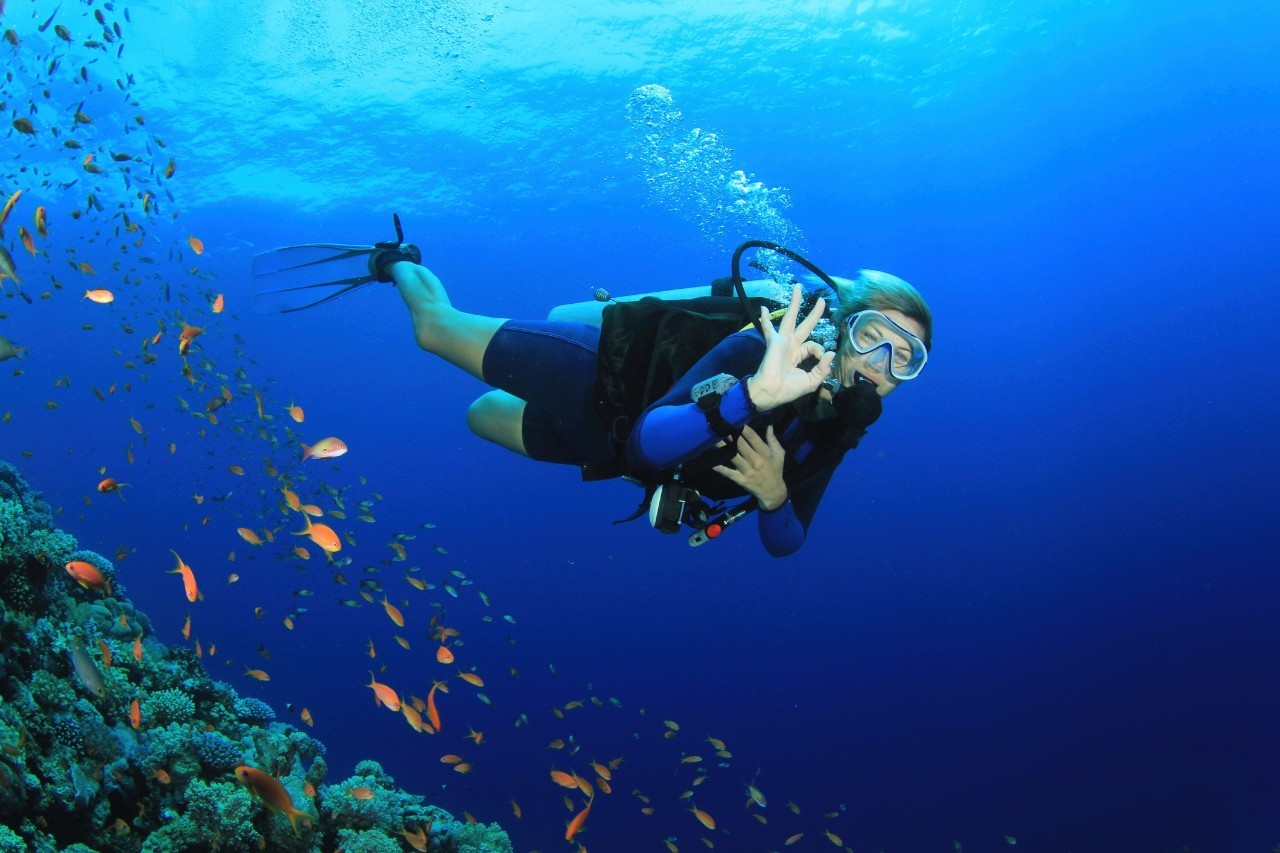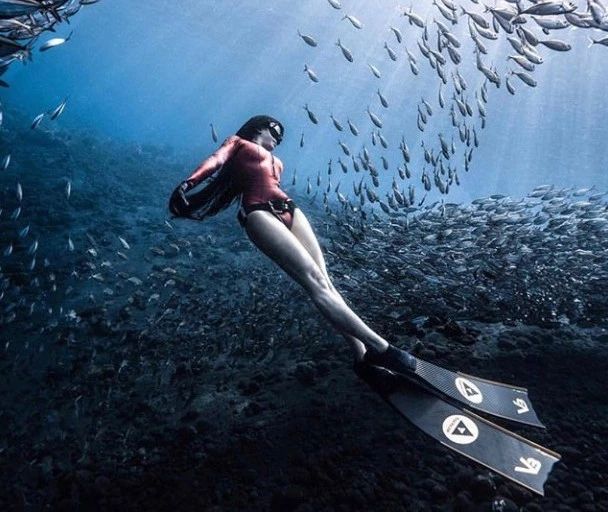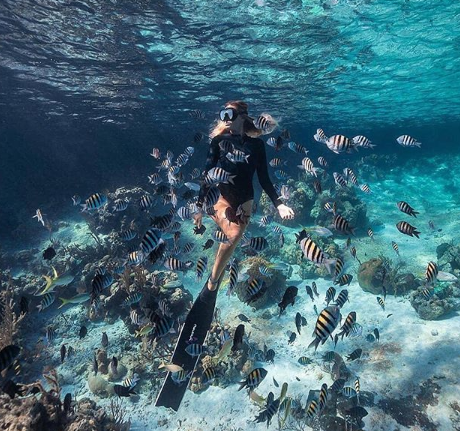Beginner diving tips

Types of recreational diving
If you want to go diving, you must first know the types of diving and the levels of diving. After knowing these, you can research where to go for research and choose a diving shop. Let’s take a look at the levels of diving. There are more kinds.
1. Snorkeling
This is a diving that uses a mask, snorkel, and fins to float on the water surface, and you can observe the underwater landscape through the mask, or a diving partner can snorkel in the water for as long as they can hold their breath, and then pay for sleep after they have no way to breathe. way, as long as you pass a simple training, and you don't need a certificate.
2. Scuba diving
This is the way for divers to carry air cylinders (not oxygen cylinders) and use the air in the cylinders to breathe in water for long-term diving, which is generally called deep diving or air diving. The way of play, once you like deep diving, it will get out of hand. But scuba diving requires an exam to get a certificate to dive.
3. Free diving
Freediving means that you do not take an oxygen tank, adjust your breathing through your own lung capacity, and try to dive as deep as possible while holding your breath. But only diving is very dangerous, so the requirements for physical fitness are also relatively high, and the requirements for personal attention are very strict.

Classification of diving
The most basic diving is snorkeling. There is no threshold for this. Even people who can’t swim, mainly have equipment that can snorkel, and then experience diving, which does not require a certificate, but the deepest experience. It is submerged to 12 meters. The next level is the level of the diving certificate. There are many levels of diving certificates. At the beginning, the snow is to obtain the OW or AOW certificate. The OW is a junior diver certificate, and the limit for diving depth with this certificate is 18 meters. AOW is an advanced diver certificate with a water depth limit of 28 meters.
The experience of diving for the first time
It is the first time to experience diving. Before entering the water, there should be fear. It is conceivable that we will be out of the air for a long time, and we will dive into the water several meters deep. Although it is an oxygen bottle, you are not breathing before the experience. The device will be somewhat distrustful.
Next is the coach carrying you around in the water. It is the first time that you actually wear an oxygen bottle in the water. Your inner OS is quite rich. There is fear and freshness. It is a little uncomfortable, but it is also very fun. If you are a little nervous, you will feel that you can't breathe, but don't hold your breath; the coach gives you hand signals, but you are confused.
But after slowly getting used to this process, you will relax and feel very calm. You can hear the sound of your own breathing. In the water, you can feel weightlessness. Under the guidance of the instructor, do some things on land. It is difficult to complete the general action and it is easy to complete, this feeling is very wonderful, then you slowly notice the beautiful scenery in the sea, many unseen fish, and you swim with them, even look at each other, and Lots of colorful corals, just like that, you'll be hooked on the ocean and linger...

The health benefits of diving
1. Improve physical strength and flexibility
Diving is a good sport and it helps you to improve your stamina. In diving, muscles usually require more force as you move through the water. Diving strengthens your core and improves your flexibility. The more you dive, the healthier your body will be
Burning calories, scuba diving is an intense exercise for your body. It helps burn a lot of calories, 220 calories per dive.
2. Exercise your heart by breathing
The most important diving rule is to keep breathing deeply and slowly. It helps maintain the heart rate, it also reduces the risk of lung expansion damage, reduces mucus buildup and aids in asthma recovery.
change unhealthy lifestyle
In most eyes, diving enthusiasts are usually dark skinned, which is healthy for us, and diving during the day causes us to be tired and tired. You will find that every diver has a healthy way of working.

How to choose diving equipment for beginners
Main equipment: The recommended order is: mask - computer watch - diving boots - wet suit - fins - regulator group + BCD.
1. Mask: A good mask will provide a wider field of vision. Fits your face shape, wears for a long time without hurting your forehead or squeezing the bridge of your nose. Good airtightness, no water enters underwater, no need to drain the mask all the time, and you have a relaxed mood. No fog, to avoid seeing flowers in the fog and seeing nothing. Clean and don't have to worry about renting masks to spread eye diseases.
2. Computer watch: Accurately monitor your depth, water temperature, time, no-decompression limit, display safety stop time, log your diving record, set diving plan time, etc. When we are new to diving, you will learn the concept of no decompression, and the correct use of the computer will keep you away from diving diseases, which is very important. In general diving shops, the rental of computer watches is 15-20 US dollars per day, and it is really better to buy a piece of diving for three trips.
3. Diving boots: To prevent scratches on the soles of your feet, you will know if the shoes fit your feet. There are different thicknesses. The thickened sole is slightly more expensive. Try to buy the high version of the ankle. The ankle is also very easy to be scratched.
4. Wet suits: Wet suits are divided into two types, one is a commonly used wet suit and the other is a dry suit for diving in cold waters. Dry suits are generally out of reach for beginner divers. Let’s talk about wet suits here: the main function is to keep warm. The thermal insulation design principle of wet wetsuits is to lock water, so that the water that contacts your skin does not run out of the wetsuit, so as to avoid the current taking away your body surface temperature, So as to achieve the effect of keeping warm. Strong recommendation: Beginners should not use half-sleeve wetsuits! When you have not exceeded 20 dives, your neutral buoyancy has not yet reached the level of retraction and release, and it is particularly easy to scrape the bottom of the sea. Especially your knees!
5. Fins: When diving, our forward momentum is all done with our feet (the rowers are all in the wrong position). So the underwater power source is your pair of powerful fins. The fins rented by the dive shop are generally in disrepair, the keel is deformed, the elasticity is lost, and the kicking efficiency is greatly weakened. Before buying fins, in order to avoid repeated purchases, you need to Know what kicking position is right for you, which is why you put your fins farther back. There are three types of freestyle kicks, frog kicks and new mixed kicks during diving. Freestyle kicking is very simple, kick up and down, pay attention to knee movements. More experienced divers use the relatively low-effort frog kick. The new hybrid kick is a highly difficult kick that combines frog kick and free kick. It is more complicated and will not be described in detail here.
6. Regulator group (first and second stage, backup air source, pressure gauge): It is recommended to buy a single gauge (pressure gauge).
7.BCD/Back-flying: First of all, it is strongly not recommended for novices to use the back-flying. When you inflate the BCD, the BCD will wrap the body, and the back fly is just on your back, there is a feeling of being lifted. Therefore, when your neutral grasp is not very good and your body posture is not very correct, the gas in the back fly will swing left and right on both sides of your back cylinder, which is difficult for beginners to control. The advantage of flying on the back is that it is light, foldable, and easy to carry. It does not hoop like a BCD, and the body is lighter. My personal suggestion is not to use the back fly when you come up, and after the technique is practiced, go back to the back fly.
Diving 0 Basics: What Beginners Need to Know About Diving!
What are the precautions for beginners to learn snorkeling?
Information for Beginners in Scuba Diving
Precautions for novice diving
learn to dive